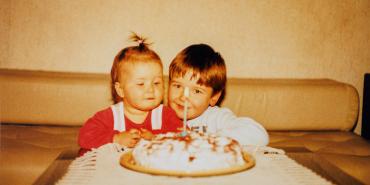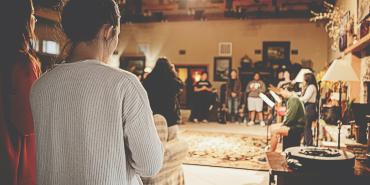What''s in a Building?

As a somewhat awkward junior high kid at Western Oaks School in Oklahoma City, I took a drafting class. We had a drawing table, a T-square ruler, some big tablets of paper, and sharp pencils. We tried to draw plans for building projects on a very basic level. I thought I might want to be an architect someday. Of course, that was just one of many possible vocations I considered. Mostly, I wanted to do something that would make me wealthy. For the record, I am neither an architect nor wealthy.
Perhaps the most enduring impression from that drafting class was a foundation of appreciation for the people who design buildings. Some designers are better than others. But maybe it really is true that "beauty is in the eye of the beholder."
Most every society appreciates good buildings. Did you know that you can take a tour in almost any major city to see its great buildings? TV has many channels and programs devoting hours of programming to the design, creation, and remodeling of buildings that range from the mundane to the majestic.
In almost every case, the building project that is showcased in such programs is examined to see whether it is fit for the purpose for which it was created. Cathedrals and castles built in Europe centuries ago still stand the test of time. They may need occasional repair but their designers obviously had a good plan in mind.
Buildings that stand the test of time aren't always attractive to the eye, but if they have served the purpose for which they were created, is it possible to see beauty in them?
The university campus where I work tore down a building not too long ago. I went to college here and know its buildings well. This particular one is a worn-out structure that has been overtaken by spiders and other creepy creatures, but it is a beautiful building to me. Built in the mid-1960s, it is a ranch-style, one-story house that served as the official residence of the president of the school until 1991. It was maintained as a residential abode for other university personnel for a few years after that.
In more recent times, the building was still a home of sorts. The "old president's home" became the home of the campus counseling functions for a number of years. Students could come by the house and get help with career and personal counseling. Many got help finding an internship or a job. Still others got help finding their way through emotional issues that threatened to undo their life.
Although it was no longer a home to permanent residents, it could reasonably be argued that the building was still fulfilling the purpose for which it was intended. That is, it was still a campus home.
"Home" is a word that conjures up different feelings for us. If our home was a happy one, the word itself brings a sense of warmth and comfort. If our home was not so happy, the word can be unsettling if not downright painful.
In Old Testament times the building was important. For the people of God, the actual temple was symbolic of a whole way of life. The temple was built, attacked, and destroyed, then rebuilt because if there was no Temple then God had nowhere to live. Thus, the Designer of the temple figured out a better plan.
He decided that the temple could live in us. We are now expected to be a temple in which the Ultimate Designer could dwell.
Back to the house on our campus: due to the fact that I fell in love with the president's daughter, I spent a lot of time there. In fact, I married the girl. So, when our sons were born, we spent even more time in that house. My sons learned to read in that house. We had many family gatherings in that house, including holidays and birthdays and even some not so happy days.
Now, the wrecking ball has done its work. The building came down and the remains were carted off. But, like the Temple of God that is within us, the life we shared in that house will stand as long my family and I have the gift of life and memory.
Michael Johnson is public liaison for the office of the president at Trevecca Nazarene University in Nashville.
Holiness Today, 2014
Please note: This article was originally published in 2014. All facts, figures, and titles were accurate to the best of our knowledge at that time but may have since changed.




